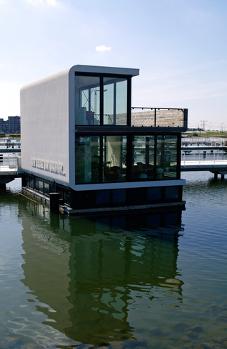Water management: key ideas for system innovation
| Function / Domain: | Water management, Spatial planning, Building |
| Illustration of: | Key ideas for system innovation, Perverse link |
Room for the River
Dikes have been providing safety along the Dutch rivers for decades. Building dikes was the predominant security strategy, in addition to improving water drainage through canals. In the meantime, more and more houses were being built behind the dikes and the residents felt safe.
Two major floods in 1993 and 1995 changed all that. The link was made between the floods and climate change, which is causing the sea level to rise and increasing the volume of water flowing from the hinterland and in turn leads to higher maximum water levels.
Increasing the height of the dikes is not necessarily the right answer because there is an inherent ‘perverse link'. After all, the consequences will simply be worse if the raised dikes burst or the water spills over them because of the higher water levels. A new strategy was conceived, with the key idea for system innovation of not increasing the height of the dikes but lowering the maximum water level: creating more room for the river.
Building with water
Climate change presents water managers and spatial planners in urban areas with the challenge of creating more space to store water. Rapid drainage of rainwater leads to drought when there is little rain. And heavy rain showers cause flooding because the drainage capacity is often inadequate.
The first answer the stakeholders came up with was to reserve land that had not been built on for water storage, since they assumed that building would reduce the possibilities for storing water. But a number of innovative thinkers wondered whether the negative perverse link between building and space for water was so compelling. Their answer was no.
Hence the key idea for system innovation of ‘building with water' was born. In the Netherlands greenhouses are now being developed with cellars that can be used to store water; systems are being developed to store water on roofs and car parks; there are floating greenhouses which offer no impediment to water storage; and there are even plans for a floating city. Once the mindset has switched, it is possible to find numerous possibilities for combining building and water storage.
Sources
